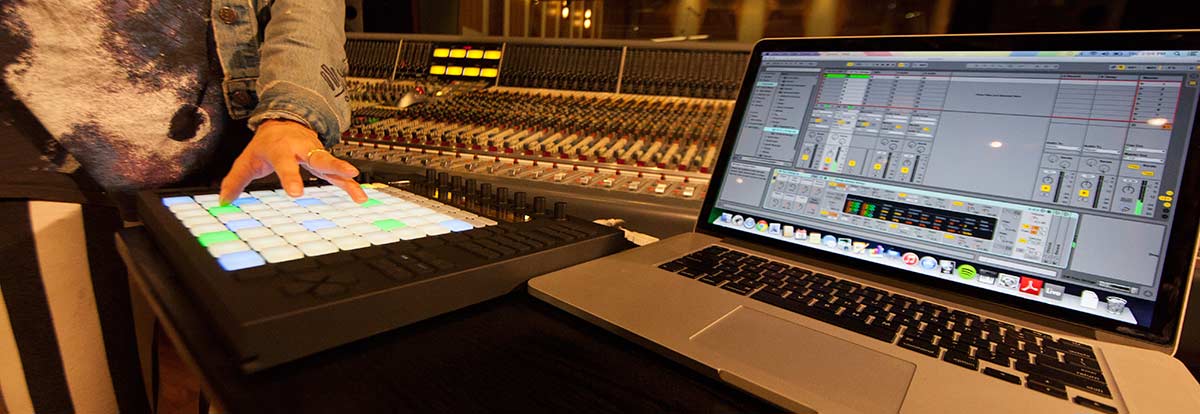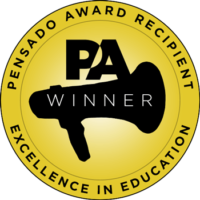Please fill out the following information, and RRFC Admissions will contact you to discuss our program offerings:
Issue #68
by L. Swift and Jeff McQ


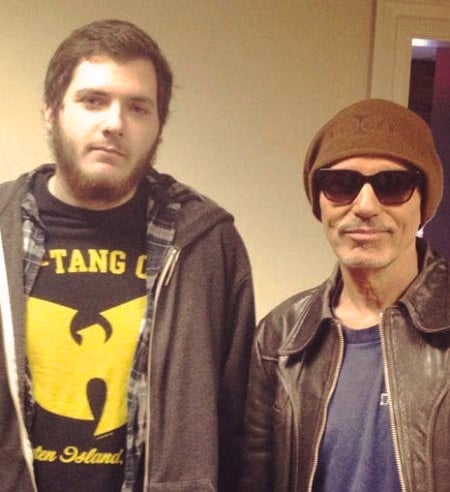 “Since I was little, I would watch movies over and over again,” says Film Connection apprentice Jamie Reed of his lifelong passion for film. “Growing up, I would make tiny movies with a crappy camera that my parents had…I liked film because it could take you out of the world and put you in a different world for a certain amount of time and make you forget everything. Anything was possible inside of movies.”
But when it came time to prepare for a career, Jamie found himself at a crossroads, knowing he needed an education and even scoping out a few film schools, but dreading the idea of film school in general. He didn’t want to sit in a class: he wanted to get involved. “I wanted to get out there,” says Jamie. “I wanted to gain experience through action.”
So when Jamie discovered the Film Connection, the choice to learn filmmaking on-the-set was obvious. “Film Connection was, by far, the best option I could choose,” he says. “I was not a person ready for four years in a college class.”
Jamie was placed with Emmy-winning Film Connection mentor Zac Adams of Skydive Films in Nashville, Tennessee. From the moment he walked into his first session, Jamie knew he was in the right place for getting into the action.
“Since I was little, I would watch movies over and over again,” says Film Connection apprentice Jamie Reed of his lifelong passion for film. “Growing up, I would make tiny movies with a crappy camera that my parents had…I liked film because it could take you out of the world and put you in a different world for a certain amount of time and make you forget everything. Anything was possible inside of movies.”
But when it came time to prepare for a career, Jamie found himself at a crossroads, knowing he needed an education and even scoping out a few film schools, but dreading the idea of film school in general. He didn’t want to sit in a class: he wanted to get involved. “I wanted to get out there,” says Jamie. “I wanted to gain experience through action.”
So when Jamie discovered the Film Connection, the choice to learn filmmaking on-the-set was obvious. “Film Connection was, by far, the best option I could choose,” he says. “I was not a person ready for four years in a college class.”
Jamie was placed with Emmy-winning Film Connection mentor Zac Adams of Skydive Films in Nashville, Tennessee. From the moment he walked into his first session, Jamie knew he was in the right place for getting into the action.
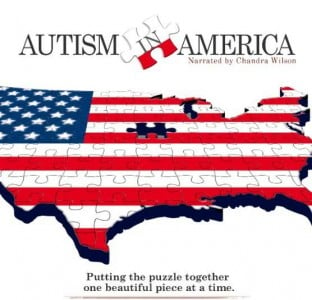 “The first day, it was an interview for [Zac’s documentary] movie Autism in America,” says Jamie. “He interviewed a parent who has twins with autism. I helped set up lighting.”
Jamie admits he was intimidated at first by jumping into a shoot the first day, especially with some of the unfamiliar lingo—but his mentor made sure he was brought up to speed. “[It was], ‘All right, this is what this means. So next time when you do it, this is how you do it again like that.’ It was a little overwhelming, but it was exactly what I wanted,” says Jamie. “I wasn’t thrown to wolves and just left to die. I was being taught on the set…He was getting me involved, and it got me extremely excited for everything ahead of myself.”
And the involvement didn’t stop there. As Jamie began his apprenticeship, he (along with fellow apprentice Matt Gibson) ended up playing an integral role in the production of Autism in America, which is narrated by Grey’s Anatomy star Chandra Wilson. “I did audio, I did lights, I shot some footage for it that is actually in the film and helped edit it,” he says. “I didn’t edit it myself, you know; it was me, the director and the editor in the room getting it finished. But yeah, some of the shots, some of the B-roll shots I did ended up in the film.”
For his work on the project, mentor Zac Adams tells RRFC that Jamie and fellow apprentice Matt Gibson are receiving Assistant to the Editor credits on Autism In America, which officially premiered last week in Nashville. “Jamie’s resumé is gonna be pretty big when he’s done in a few months,” says Zac, “because he’s done everything from music videos to corporate, to feature documentaries.”
Talk about getting the full experience.
These days, as Jamie finishes up his apprenticeship, he says he’s been working on raising money for a short film of his own, as well as leveraging his newfound skills for income by doing video work for his own clients, which he says has been “going great!” Besides all that, he’s been working with his mentor on yet another feature documentary called Iron Will, an exposé about PTSD which is being narrated by none other than Billy Bob Thornton! Jamie has once again been running audio, and he shares a bit of what it’s been like on the interviews.
“You know, these guys who look tough and everything like that, they kinda break down in the middle of the interview talking about how tough it is over there,” he says. “We’ve gotten some really emotional interviews…It’s hard, I’m running audio, and I’m listening, but I’m also feeling myself tearing up, but I’m like, ‘Oh, I can’t make any sound because that’s just gonna ruin the whole piece!’ So I just try to focus on audio, and it gets tough, but it’s a great thing to be a part of because this documentary is out there help soldiers or veterans find somewhere to go and actually deal with it.”
Jamie decided on the Film Connection because he wanted to learn by getting involved. Today, instead of sitting in a traditional film school classroom, he’s well on his way to a career doing what he loves. “Some people aren’t meant to sit down in classrooms,” he says. I think what sets [Film Connection] apart is that it gets people involved right away. It’s not a sit-down for four years in a classroom. [It’s] ‘This is how you do a shoot. This is a wide shot.’ You’re right in there….that’s what I love about it. Making connections with the people, getting involved, you’re straight into it.”
“The first day, it was an interview for [Zac’s documentary] movie Autism in America,” says Jamie. “He interviewed a parent who has twins with autism. I helped set up lighting.”
Jamie admits he was intimidated at first by jumping into a shoot the first day, especially with some of the unfamiliar lingo—but his mentor made sure he was brought up to speed. “[It was], ‘All right, this is what this means. So next time when you do it, this is how you do it again like that.’ It was a little overwhelming, but it was exactly what I wanted,” says Jamie. “I wasn’t thrown to wolves and just left to die. I was being taught on the set…He was getting me involved, and it got me extremely excited for everything ahead of myself.”
And the involvement didn’t stop there. As Jamie began his apprenticeship, he (along with fellow apprentice Matt Gibson) ended up playing an integral role in the production of Autism in America, which is narrated by Grey’s Anatomy star Chandra Wilson. “I did audio, I did lights, I shot some footage for it that is actually in the film and helped edit it,” he says. “I didn’t edit it myself, you know; it was me, the director and the editor in the room getting it finished. But yeah, some of the shots, some of the B-roll shots I did ended up in the film.”
For his work on the project, mentor Zac Adams tells RRFC that Jamie and fellow apprentice Matt Gibson are receiving Assistant to the Editor credits on Autism In America, which officially premiered last week in Nashville. “Jamie’s resumé is gonna be pretty big when he’s done in a few months,” says Zac, “because he’s done everything from music videos to corporate, to feature documentaries.”
Talk about getting the full experience.
These days, as Jamie finishes up his apprenticeship, he says he’s been working on raising money for a short film of his own, as well as leveraging his newfound skills for income by doing video work for his own clients, which he says has been “going great!” Besides all that, he’s been working with his mentor on yet another feature documentary called Iron Will, an exposé about PTSD which is being narrated by none other than Billy Bob Thornton! Jamie has once again been running audio, and he shares a bit of what it’s been like on the interviews.
“You know, these guys who look tough and everything like that, they kinda break down in the middle of the interview talking about how tough it is over there,” he says. “We’ve gotten some really emotional interviews…It’s hard, I’m running audio, and I’m listening, but I’m also feeling myself tearing up, but I’m like, ‘Oh, I can’t make any sound because that’s just gonna ruin the whole piece!’ So I just try to focus on audio, and it gets tough, but it’s a great thing to be a part of because this documentary is out there help soldiers or veterans find somewhere to go and actually deal with it.”
Jamie decided on the Film Connection because he wanted to learn by getting involved. Today, instead of sitting in a traditional film school classroom, he’s well on his way to a career doing what he loves. “Some people aren’t meant to sit down in classrooms,” he says. I think what sets [Film Connection] apart is that it gets people involved right away. It’s not a sit-down for four years in a classroom. [It’s] ‘This is how you do a shoot. This is a wide shot.’ You’re right in there….that’s what I love about it. Making connections with the people, getting involved, you’re straight into it.”
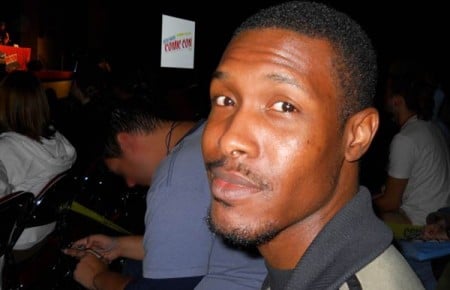 Congrats to recent Radio Connection graduate Martini Jean on landing a gig as radio host for “AllThingsGeek” on WSRP Radio, where he and a co-host will cover sci-fi, comic books, movies, tech and a number of local, geek-tastic events!
Congrats to recent Radio Connection graduate Martini Jean on landing a gig as radio host for “AllThingsGeek” on WSRP Radio, where he and a co-host will cover sci-fi, comic books, movies, tech and a number of local, geek-tastic events!
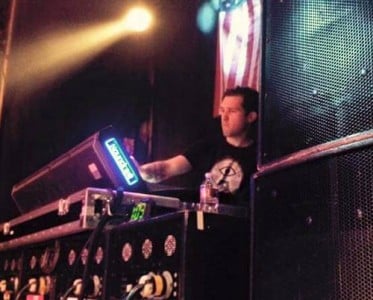 Recording Connection graduate JJ Moser is busy, busy, busy working as drum tech for Edward Sharpe and the Magnetic Zeros! First Boston, then Sonoma and after that, who’s to say where?!
Recording Connection graduate JJ Moser is busy, busy, busy working as drum tech for Edward Sharpe and the Magnetic Zeros! First Boston, then Sonoma and after that, who’s to say where?!
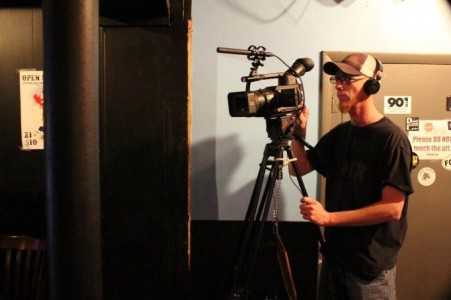 Film Connection apprentice Stacy Tantaros of Scranton, KS has some good things to say about his first night out shooting: “I got to meet some really cool people from the Independent Filmmakers Coalition of Kansas City. Listening to them tell stories about all the films they worked just on blew my mind. I got to play with some killer toys, too.”
Film Connection apprentice Stacy Tantaros of Scranton, KS has some good things to say about his first night out shooting: “I got to meet some really cool people from the Independent Filmmakers Coalition of Kansas City. Listening to them tell stories about all the films they worked just on blew my mind. I got to play with some killer toys, too.”
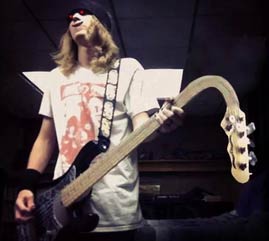 Recording Connection apprentice Spencer Marszalek of Sugarloaf, Pennsylvania has been helping his mentor program drums for a series of instrumental rock tracks that are bound for NYC. Spencer says, “It wasn’t easy, but I really did learn a lot from doing that. It was probably the hardest I’ve worked the whole time I was there, and I had a blast doing it.”
Recording Connection apprentice Spencer Marszalek of Sugarloaf, Pennsylvania has been helping his mentor program drums for a series of instrumental rock tracks that are bound for NYC. Spencer says, “It wasn’t easy, but I really did learn a lot from doing that. It was probably the hardest I’ve worked the whole time I was there, and I had a blast doing it.”
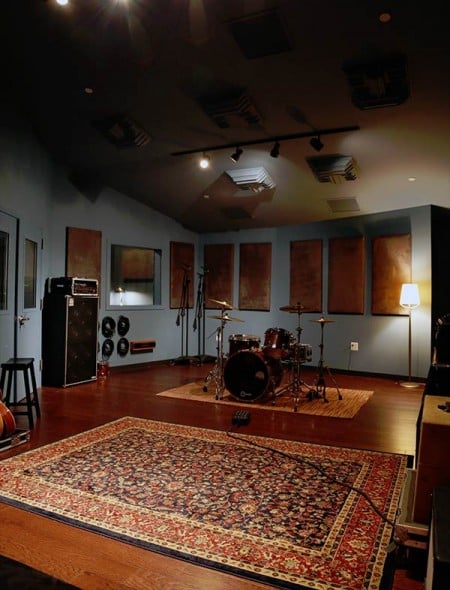 When it comes to audio engineering, they don’t come with a much deeper bank of experience as Recording Connection mentor Conrad Osipowicz. In his years of experience, not only has he engineered and produced a wide range of acts in the studio, but he’s also worked extensively in live audio (including heading up the live mix department of a high-profile Boston radio station) and even testing new products for major companies like Cakewalk. Over the years, Conrad has crossed paths and worked with major artists like Regina Spektor, Dave Matthews Band, The Pixies, Dropkick Murphys and many others. This bank of experience gives Conrad an advantage in teaching apprentices who are interested in many different aspects of the music industry.
Today, Conrad is the owner and chief engineer of Blue Room Productions, one of the most well-appointed studios in the Washington, DC area. While the main studio is located in Bethesda, MD about 25 minutes from the White House, Blue Room recently expanded its reach to include a second location in Herndon, VA, which will also give the Recording Connection yet another convenient, high-quality location for placing our Virginia apprentices!
We caught up recently with Conrad to see how things were going, and as is usually the case with our mentor conversations, he had some keen insights to share about the music business, how to build a studio, and what he tells his students about smart business practices and servicing clients. Below are some of the best nuggets we mined from the conversation.
When it comes to audio engineering, they don’t come with a much deeper bank of experience as Recording Connection mentor Conrad Osipowicz. In his years of experience, not only has he engineered and produced a wide range of acts in the studio, but he’s also worked extensively in live audio (including heading up the live mix department of a high-profile Boston radio station) and even testing new products for major companies like Cakewalk. Over the years, Conrad has crossed paths and worked with major artists like Regina Spektor, Dave Matthews Band, The Pixies, Dropkick Murphys and many others. This bank of experience gives Conrad an advantage in teaching apprentices who are interested in many different aspects of the music industry.
Today, Conrad is the owner and chief engineer of Blue Room Productions, one of the most well-appointed studios in the Washington, DC area. While the main studio is located in Bethesda, MD about 25 minutes from the White House, Blue Room recently expanded its reach to include a second location in Herndon, VA, which will also give the Recording Connection yet another convenient, high-quality location for placing our Virginia apprentices!
We caught up recently with Conrad to see how things were going, and as is usually the case with our mentor conversations, he had some keen insights to share about the music business, how to build a studio, and what he tells his students about smart business practices and servicing clients. Below are some of the best nuggets we mined from the conversation.
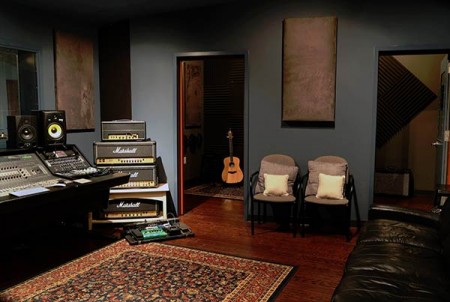 ON WHY HE OPENED A SECOND LOCATION: “We’re really trying to give options to musicians and other producers and even freelance engineers here in the DC area, because it’s not nearly as competitive here as it is in New York, or Nashville, or LA where there’s a studio on every block. Here, it’s completely different, as you can imagine…So, this spring and this summer will be really busy because we’ll have two studios running simultaneously to accommodate different types of artists and people in different areas around the DC area, with slightly more affordable hourly rates in Virginia, too.”
ON WHY HAVING A GREAT STUDIO ISN’T ALL ABOUT THE GEAR: “It’s not just having the gear and getting the expertise. Maybe to work on your own that’s all you need. But if you want to work with others, this is an industry of collaboration and communication with producers, and engineers, and artists, and graphic designer[s], and photographer[s], and all different people in the music industry, videographers, directors. You need to know how to interact with people, how to shake hands, smile, dress appropriately. All those basic things people overlook them and assume that, yeah, if you’ve got the gear and you’ve got the plug-ins, then that’s all you need…Someone who actually knows what button to push and why they’re pushing it, and why the mic was turned a certain way—the experience is ten times more valuable than any piece of gear or any plug-in you can use. You know, engineering in the studio with a band or a singer is about your personality and your smile and your ability to be pleasant and to want to spend time with someone in the studio. That’s 90%-plus of the session. And the gear and your keyboard shortcuts and all that stuff is 10% or less. I have a couple of freelance engineers who pass through the studio and, yes, they might have a great pair of ears and be able to produce a great mix, but if they’re not pleasant or they haven’t showered or they don’t smile, whatever their excuse is—you know, no one wants to spend eight hours, ten hours in a long session with somebody like that.”
ON THE IMPORTANCE OF KNOWING YOUR STUFF IN THE STUDIO: “You know, a lot of people might walk into my studio who maybe have never been in a studio and think, ‘Wow! Awesome gear. How much did everything cost? And, how long did it take you to get everything?’ Yeah, it takes some time and some investment. There’s of course some risk associated with buying hundreds of thousands of dollars of rare equipment, but you’ve [also] got to know what you’re doing with it…If you can do a great mix with just plug-ins in the box, that’s more valuable than any type of gear you could have in the rack.”
ON WHY HE OPENED A SECOND LOCATION: “We’re really trying to give options to musicians and other producers and even freelance engineers here in the DC area, because it’s not nearly as competitive here as it is in New York, or Nashville, or LA where there’s a studio on every block. Here, it’s completely different, as you can imagine…So, this spring and this summer will be really busy because we’ll have two studios running simultaneously to accommodate different types of artists and people in different areas around the DC area, with slightly more affordable hourly rates in Virginia, too.”
ON WHY HAVING A GREAT STUDIO ISN’T ALL ABOUT THE GEAR: “It’s not just having the gear and getting the expertise. Maybe to work on your own that’s all you need. But if you want to work with others, this is an industry of collaboration and communication with producers, and engineers, and artists, and graphic designer[s], and photographer[s], and all different people in the music industry, videographers, directors. You need to know how to interact with people, how to shake hands, smile, dress appropriately. All those basic things people overlook them and assume that, yeah, if you’ve got the gear and you’ve got the plug-ins, then that’s all you need…Someone who actually knows what button to push and why they’re pushing it, and why the mic was turned a certain way—the experience is ten times more valuable than any piece of gear or any plug-in you can use. You know, engineering in the studio with a band or a singer is about your personality and your smile and your ability to be pleasant and to want to spend time with someone in the studio. That’s 90%-plus of the session. And the gear and your keyboard shortcuts and all that stuff is 10% or less. I have a couple of freelance engineers who pass through the studio and, yes, they might have a great pair of ears and be able to produce a great mix, but if they’re not pleasant or they haven’t showered or they don’t smile, whatever their excuse is—you know, no one wants to spend eight hours, ten hours in a long session with somebody like that.”
ON THE IMPORTANCE OF KNOWING YOUR STUFF IN THE STUDIO: “You know, a lot of people might walk into my studio who maybe have never been in a studio and think, ‘Wow! Awesome gear. How much did everything cost? And, how long did it take you to get everything?’ Yeah, it takes some time and some investment. There’s of course some risk associated with buying hundreds of thousands of dollars of rare equipment, but you’ve [also] got to know what you’re doing with it…If you can do a great mix with just plug-ins in the box, that’s more valuable than any type of gear you could have in the rack.”
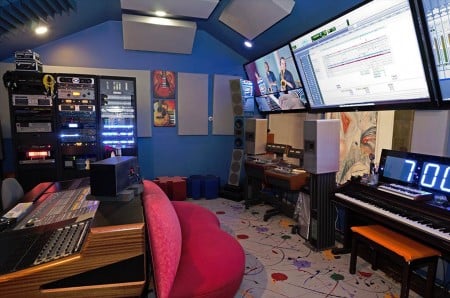 ON WHY HE STRESSES SIGNAL FLOW TO HIS STUDENTS: “Definitely, a big emphasis on signal flow is really critical for a studio. My setup is not very complex here in the studio, but to be able to troubleshoot on the fly and know why somebody can’t hear themselves in their headphones, or why you’re not getting signal, something like that is critical to running a successful studio and having a pain free recording session with somebody….[I tell students], you know it’s no big deal now when we’re kind of one-on-one and just experimenting, and even have a chance to bring some friends who might play guitar and sing or play piano and they can act as the guinea pig for the session. But, if they have a real client there, and they’re paying $110 dollars an hour for studio time, then you know, they should never be waiting for you. If anything, you should be waiting for them. No one wants to wait for you to patch in gear or fix the headphones or swap out a cable. So, signal flow is pretty critical.”
ON WHY LEARNING HANDS-ON IS IMPORTANT: “I am a firm believer that practicing and learning in the studio in a hands-on manner will always yield a more informed and experienced studio engineer than someone who simply learns via lectures, YouTube tutorials, discussion forums, etc. For that reason, I often encourage my students during their lessons to record a friend’s band, or an individual singer-songwriter who might play acoustic guitar and sing, or play piano and sing. That way, the artist can act as a guinea pig for the students, but also walk away with a professional well-mixed recording. The student gets to practice on a real recording artist in a real recording studio. Everybody wins.”
ON THE IMPORTANCE OF CONNECTING TO THE LARGER MUSIC COMMUNITY: “In addition to practicing technique inside the studio, I am always encouraging my students to participate in the audio engineering community outside of the studio, too. I am a voting member of the Grammys, and not only attend the show in LA each year, but also participate in all the local Grammy events that are presented by the Washington DC Chapter of the Grammy Academy. Additionally, I am a member of the AES (Audio Engineering Society) and just returned last week from the AES conference , which was held this year in Warsaw, Poland. I remind my students that it’s not only a great opportunity to learn more about engineering from experts, but also an unbelievable networking tool to meet other local engineers, producers, songwriters, composers, musicians, etc.”
ON WHY HE STRESSES SIGNAL FLOW TO HIS STUDENTS: “Definitely, a big emphasis on signal flow is really critical for a studio. My setup is not very complex here in the studio, but to be able to troubleshoot on the fly and know why somebody can’t hear themselves in their headphones, or why you’re not getting signal, something like that is critical to running a successful studio and having a pain free recording session with somebody….[I tell students], you know it’s no big deal now when we’re kind of one-on-one and just experimenting, and even have a chance to bring some friends who might play guitar and sing or play piano and they can act as the guinea pig for the session. But, if they have a real client there, and they’re paying $110 dollars an hour for studio time, then you know, they should never be waiting for you. If anything, you should be waiting for them. No one wants to wait for you to patch in gear or fix the headphones or swap out a cable. So, signal flow is pretty critical.”
ON WHY LEARNING HANDS-ON IS IMPORTANT: “I am a firm believer that practicing and learning in the studio in a hands-on manner will always yield a more informed and experienced studio engineer than someone who simply learns via lectures, YouTube tutorials, discussion forums, etc. For that reason, I often encourage my students during their lessons to record a friend’s band, or an individual singer-songwriter who might play acoustic guitar and sing, or play piano and sing. That way, the artist can act as a guinea pig for the students, but also walk away with a professional well-mixed recording. The student gets to practice on a real recording artist in a real recording studio. Everybody wins.”
ON THE IMPORTANCE OF CONNECTING TO THE LARGER MUSIC COMMUNITY: “In addition to practicing technique inside the studio, I am always encouraging my students to participate in the audio engineering community outside of the studio, too. I am a voting member of the Grammys, and not only attend the show in LA each year, but also participate in all the local Grammy events that are presented by the Washington DC Chapter of the Grammy Academy. Additionally, I am a member of the AES (Audio Engineering Society) and just returned last week from the AES conference , which was held this year in Warsaw, Poland. I remind my students that it’s not only a great opportunity to learn more about engineering from experts, but also an unbelievable networking tool to meet other local engineers, producers, songwriters, composers, musicians, etc.”
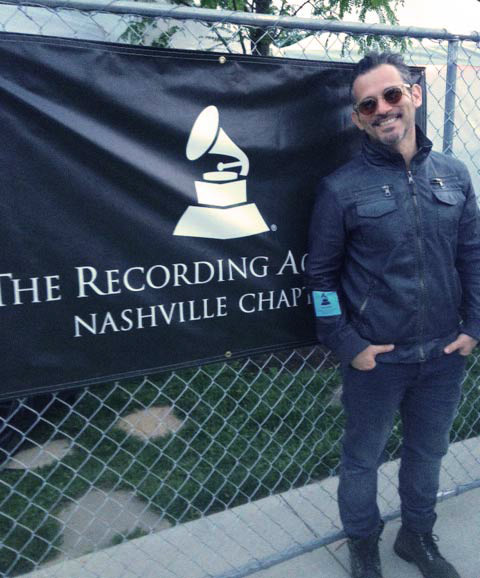 On Tuesday, May 12, starting at 4:30 pm, our own Brian Kraft was back in Nashville accepting his invitation to attend the 17th Annual GRAMMY® Block Party. Held at Cumberland Park on Nashville’s historic riverfront, the private event was organized by The Recording Academy® Nashville Chapter and was attended by leading members of the Nashville recording community.
The event featured live musical performances from Blackberry Smoke, Taylor Edwards, Janice Gaines, Hunter Hayes, John & Jacob, Meghan Trainor and Lee Ann Womack. Brian got to catch up with engineer-producers Chuck Ainlay, Bil VornDick and Julian King; studio designer Carl Tatz; and the Recording Academy Producers & Engineer’s Wing Managing Director, Maureen Droney.
On Tuesday, May 12, starting at 4:30 pm, our own Brian Kraft was back in Nashville accepting his invitation to attend the 17th Annual GRAMMY® Block Party. Held at Cumberland Park on Nashville’s historic riverfront, the private event was organized by The Recording Academy® Nashville Chapter and was attended by leading members of the Nashville recording community.
The event featured live musical performances from Blackberry Smoke, Taylor Edwards, Janice Gaines, Hunter Hayes, John & Jacob, Meghan Trainor and Lee Ann Womack. Brian got to catch up with engineer-producers Chuck Ainlay, Bil VornDick and Julian King; studio designer Carl Tatz; and the Recording Academy Producers & Engineer’s Wing Managing Director, Maureen Droney.
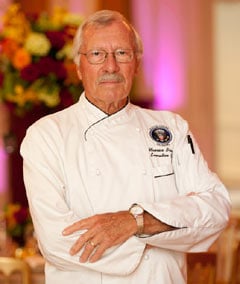 “I think it is about time that this approach to culinary education came to the United States. I started in an apprenticeship in France when I was 14 years old. I had no formal culinary school training. Apprenticeship programs were the only thing offered and I feel that they’re the best way to go.”
— Maurice Brazier retired Chef (formerly of Le Méridien Etoile in Paris)
“I think it is about time that this approach to culinary education came to the United States. I started in an apprenticeship in France when I was 14 years old. I had no formal culinary school training. Apprenticeship programs were the only thing offered and I feel that they’re the best way to go.”
— Maurice Brazier retired Chef (formerly of Le Méridien Etoile in Paris)

RRFC is education upgraded for the 21st century.
Get the latest career advice, insider production tips, and more!
Please fill out the following information, and RRFC Admissions will contact you to discuss our program offerings:
Stay in the Loop: Subscribe for RRFC news & updates!
© 2025 Recording Radio Film Connection & CASA Schools. All Rights Reserved.

